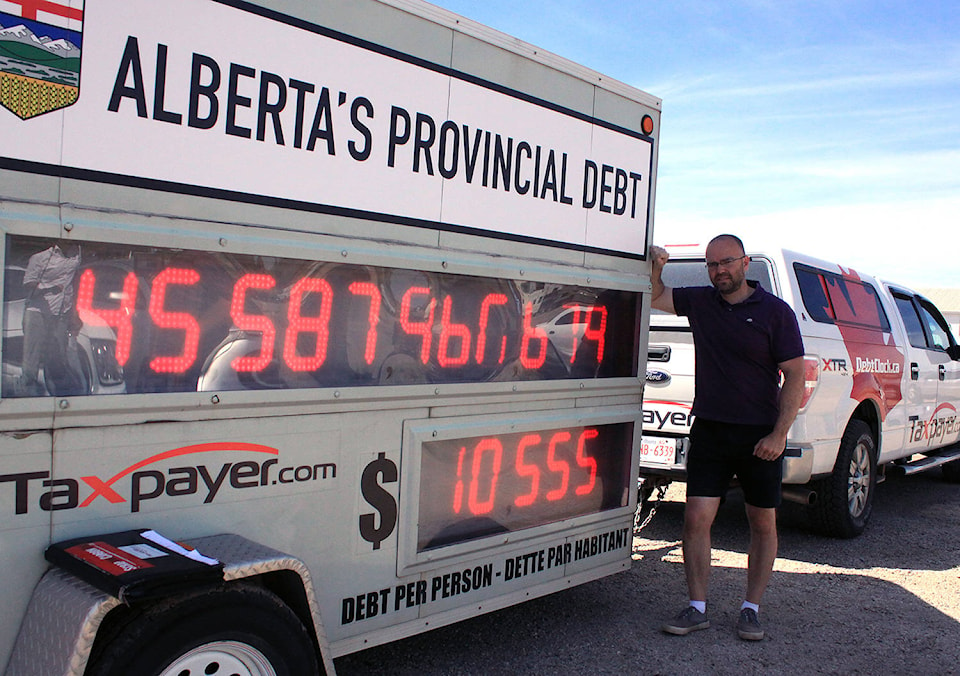The call to cut government spending was on full display in Ponoka.
The annual Canadian Taxpayers Federation’s (CTF) debt clock tour began earlier this month and stopped in town on July 16. The two-week tour of more than 20 Alberta communities is focused on educating people to the ever-growing financial situation the province is facing.
“It’s one thing to read in the newspaper that the debt is going up to $96 billion,” explained CTF Alberta director Colin Craig. “It’s another to actually see the board counting up by $344 per second. People look at that and see that it is not sustainable and they realize that the government needs to get its finances under control.”
At the rate the debt clock is moving, it takes just one hour to rack up nearly $1.5 million — a startling rate of increase, Craig states, and it’s faster than any other province in the country. That rate also translates into a per person debt in Alberta of about $10,500.
“The numbers are exploding right now. In a single term of office, just four years, the current government is going to quadruple the debt,” he said.
“The figures are off the charts and when you do the math, it shows that the government’s debt is going up over $1 million an hour and that’s not sustainable. And that’s a big part of our message, to just show people that what is going on is not sustainable and the government needs to get its spending under control.”
Prior to the 2015 election, Alberta’s debt was at $11.9 billion. Three years later, that number had risen to $42.4 billion and is estimated to reach $53.3 billion by the time voters head to the polls next spring.
Craig added that people of all ages need to understand how this will impact them in the future, but the message is especially necessary to reach the younger generations.
“One of the things we have been saying is to talk to the kids about this because essentially the government is creating a financial mess and they are expecting to just leave it to the next generation,” he said.
“That’s not fair. It’s like going out to dinner and leaving the bill off to your three-year old to pay. No one is going to do that so why should we let the government do it.”
He added he’s pleased with the number of young people that had stopped by and shared their experience on social media.
